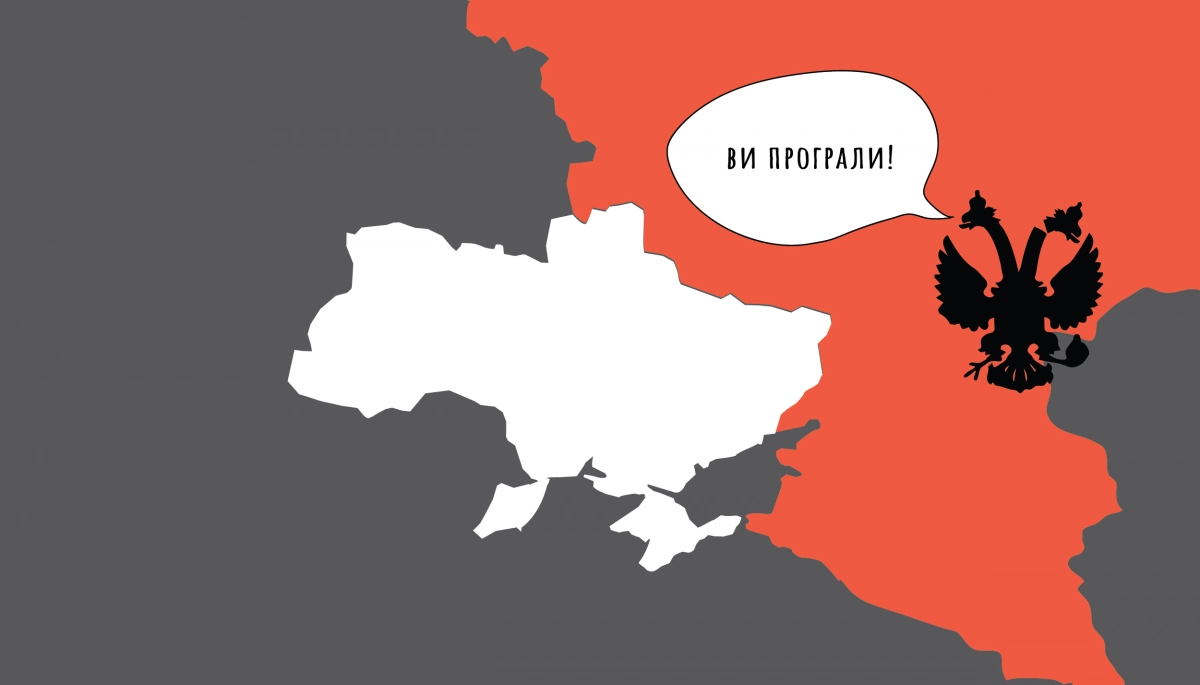

Українською читайте тут.
Russian propaganda has a well-established pattern of distorting content from reputable Western media, and this trend became particularly evident once again this week. The selective citation of Western publications, framed in a favorable context with added speculative conclusions, enables propaganda to exploit the credibility of these information sources. Selective truth blends accurate information with misleading elements to ultimately persuade the audience of propagandistic assertions. Recent publications have addressed issues with mobilization in Ukraine. For instance, the Financial Times discussed the mutual passing of responsibility for an unpopular mobilization bill between the military and politicians. Russian agitprop seized upon this publication to affirm its claims about a "division" in Ukraine's military-political leadership and the decline in morale among the Armed Forces.
Additionally, The New York Times published an article about a potential future shortage of expensive anti-missile defense systems for the American Patriot systems, which have demonstrated effectiveness in countering Russian hypersonic Dagger missiles. The information, combined with details about Russia's use of North Korean ballistic missiles and the potential delivery of Iranian ballistic missiles in the near future, provided propaganda with elements to assert the imminent dominance of Russia in the skies over Ukraine.
The book by Yaroslav Trofimov, the chief foreign affairs correspondent for the Wall Street Journal, was also referenced. In the publication, he mentions that Zaluzhnyi purportedly sought to launch an offensive in the Zaporizhzhia region in 2022 to sever the occupied land corridor to Crimea, when there were no substantial concentrations and Russian minefields. Allegedly, the Americans rejected the proposal due to uncertainties about the strength of the Armed Forces and fears of escalation, suggesting a focus on the liberation of Kherson instead. Pro-Russian channels presented this information as a missed opportunity, implying that Ukraine could have expected significant successes on the front. Further exploration delves into the components of the main message conveyed by Kremlingram this week regarding the "crisis" in the Ukrainian army.
Challenging times are ahead
Russian propagandists often foster a sense of defeat by presenting gloomy predictions from purportedly informed anonymous sources, lacking specific details. A popular pro-Russian Telegram channel, during the monitoring week, exemplifies this approach by vaguely hinting at imminent bad news from the front without delving into specifics, emphasizing the efforts to manage the situation.
This pessimistic narrative is consistently applied to any news or statements that could be interpreted unfavorably for Ukraine, or even ambiguously. Such interpretations are often divorced from the broader context of the news. For instance, Yuriy Fedorenko's comment on Ukraine's strategy to compensate for fewer drones and ammunition with more skilled personnel and innovative tactics was twisted by a pro-Russian Telegram channel to portray it as an acknowledgment of Ukraine's failures at the front. The channel distorted Fedorenko's statement, urging readers to draw conclusions pointing towards a grim outcome and challenging times.
While Russia currently surpasses Ukraine in daily artillery shots and fluctuates in the use of FPV drones across different front areas, the absolute number of offensive capabilities is significant but not determinative. Intelligence, precision, and tactical application play equally crucial roles. Despite facing a general superiority in offensive capabilities during the full-scale invasion, Ukraine has effectively executed both defensive and offensive operations. The abundance of firepower does not guarantee success but remains a favorable factor. Ukraine is actively working to bolster the supply of artillery shells from allies and increase the production of FPV drones and other unmanned aerial vehicles.
"Russian air superiority is anticipated to be fully established by spring"
Recent discussions about the impending defeat of the Ukrainian army in the battle for airspace became more specific this week. For this purpose, both the above-mentioned Western publications regarding the possible shortage of missiles for air defense were used, as well as information about the repulsion of the last large-scale missile attack by Ukraine on the night of January 8, when, according to the statistics of the Air Force of the Armed Forces of Ukraine, 18 of the 51 missiles fired were shot down missiles and all 8 drones. "We wrote about the fact that our anti-aircraft defense is overloaded and cannot cope with the enemy's missile strikes. This morning it was possible to shoot down 18 Russian missiles out of 51, and this is official information. This was stated by Air Force spokesman Yuriy Ignat. The effectiveness of air defense has fallen below 50%, so the trend is obvious," concluded one of the large anonymous pro-Russian Telegram channels. Another Telegram channel drew even more radical conclusions from this shelling: "According to all our data, the situation will only intensify and our old insider will be confirmed that by the spring of 2024 the Russians will have complete dominance in the air."
For those not familiar with the intricacies of air defense, the statistics from the latest attack might appear threatening, supporting the propagandists' claims. However, taken out of context, the percentage of downed missiles in a specific attack doesn't provide a comprehensive understanding of the combat capability of Ukrainian air defense or the overall optimistic or pessimistic trends. Ukraine possesses Soviet and allied systems proven effective against drones and cruise missiles. Patriot batteries and one SAMP/T battery capable of targeting more complex ballistic or hypersonic threats are limited. Currently, only a few priority areas, including Kyiv, are covered from such threats. The Defense Forces have successfully intercepted advanced Russian Kinjal hypersonic missiles over Kyiv using Patriot systems. The statistics of missile interception depend on the type of missiles employed, with the Defense Forces successfully intercepting about 85 percent of enemy cruise missiles and attack drones. If ballistic or hypersonic missiles constitute a significant portion of the missile fire, the interception statistics logically decrease.
Moreover, there is no anti-missile defense system capable of covering the entirety of Ukraine's territory. Consequently, Ukrainian defense forces focus on localized protection around key cities, strategic sites, and specific directions, as noted by Yuriy Ignat, the spokesperson for the Air Force of the Armed Forces of Ukraine, in response to the missile attack on January 8. If the Russians target less-defended areas, such as small settlements, the sparser defenses there would permit a greater number of missiles to penetrate. Conversely, in the event of Russian attempts to breach Kyiv's multi-layered defense with substantial assaults, the success rate in repelling attacks would be much higher, at times nearing 100%.
The assault on the night of January 8 predominantly involved challenging-to-intercept hypersonic missiles (X-47M2 "Kinzhal," X-22) or missiles following a ballistic trajectory (Iskander-M, S-300/S-400). This is reflected in the statistics. Furthermore, the attacks targeted less fortified regions of Ukraine, causing some of the unintercepted anti-aircraft missiles (X-22, S-300/S-400) to often miss their intended targets and fall in fields. On that night, Ukraine successfully intercepted 18 out of 24 cruise missiles (75%) and all 8 drones (100%), aligning with figures from the previous year in countering such threats.
The reflection statistics do not indicate any adverse trends; instead, there is evidence of a gradual reinforcement of Ukrainian air defense, bolstered by Western supplies, including new Patriot complexes. Gregory Hayes, the general director of Raytheon Technologies, the developer and manufacturer of these air defense systems, anticipates the arrival of these complexes in Ukraine this year. President Zelensky emphasized that further fortifying air defense remains a top priority for Ukraine, and the pace of reinforcement is crucial. The Ukraine-NATO Council convened on January 10 to address the recent large-scale missile attacks on Ukraine. A joint statement from the participants confirmed the ongoing commitment of alliance members to supply a diverse array of air defense systems to Ukraine, underscoring their dedication to enhancing Ukraine's overall defense capabilities.
“Jingoist Bonapartenko has lost a chance to liberate Crimea”
As part of a discrediting campaign against the Crimean counter-offensive, enemy propaganda responded to a series of attacks on the occupied peninsula in January. They are promoting the manipulative notion that the point of no return in the struggle for Crimea has supposedly been reached, rendering further efforts meaningless. The attempt is to instill the idea that with the chance to bring Crimea back to Ukraine lost, internal conflicts and mutual attempts to shift blame for this "defeat" await Ukraine.
Additionally, propagandists seized statements from the Business Insider, citing the book "Our Enemies Will Vanish" by Yaroslav Trofimov, the chief foreign affairs correspondent for the Wall Street Journal. For instance, the US military purportedly believed that the Crimean counteroffensive would likely fail, resulting in a complete strategic defeat. Allegedly, according to the author, the US advised Ukraine to focus on a southern counteroffensive. Propagandists concluded that the USA "forbade the Ukrainians from advancing on Crimea." It's essential to note that neither the commander-in-chief nor official US representatives have commented on this information. The journalist relies on anonymous sources and draws speculative conclusions based on the received data, which cannot be definitively refuted or confirmed. History lacks alternative courses of action, and we can only hypothesize about what could have occurred under certain conditions in the past, without guarantees of accuracy. Therefore, the propaganda claim that the United States "banned" the Crimean counteroffensive and that Kyiv has already lost the opportunity to conquer the peninsula is nothing more than manipulation.
"Zaluzhnyi will start writing memoirs, he will call them: 'Stolen victories.' In them, he will tell how he drew up a plan for the liberation of Crimea and that at the last moment Zelensky and the Americans (British) forbade him to act as the situation required. By the way, Zelensky will write the same book, but in it everything will be the other way around, and the main anti-hero will be Valera Zaluzhny, who wanted to become a jingoist Bonapartenko and, contrary to Zelensky's orders and the advice of NATO generals, launched a counteroffensive, killing one and a half hundred thousand soldiers of the Armed Forces of Ukraine in it", said one of the Crimean occupation Telegram channels.
As per General Ben Hodges, the former commander of US forces in Europe, Ukraine's primary objective in its counteroffensive is to sever the land corridor connecting Russia and Crimea. General Hodges emphasizes that eliminating Russian soldiers within a 200-kilometer radius around Bakhmut won't alter the strategic situation, but the liberation of Crimea would be a game-changer. President Volodymyr Zelensky echoes this sentiment, asserting at the 2022 Crimean Platform international conference that everything commenced with Crimea and must conclude there, emphasizing the imperative to free the peninsula from occupation.
Yuriy Ignat, the spokesperson for the Air Force Command of the Armed Forces of Ukraine, notes a growing unease among Russian military forces in the occupied Crimea. The deployment of long-range cruise missiles from Britain and France is identified as a means to achieve the strategic goal. Further details on Russian reactions to the use of ATACAMS ballistic missiles supplied by the USA to Ukraine can be found here.
The Ukrainian military systematically diminishes the combat capabilities of the Russian army in Crimea by targeting air defense systems, warehouses, bases, arsenals, and critical logistics hubs with missiles and drones. Despite these efforts, propaganda attempts to minimize the significance of ongoing military activities, portraying them as mere "psychological pressure" and a "PR campaign." Occupation authorities seek to "normalize" the situation on the peninsula by downplaying the importance of military actions while exaggerating the defensive capabilities of enemy forces.
"Deteriorating Morale in the Armed Forces" and Zelensky's International Tour as a "Last Resort"
Additional conjectures revolve around a fabricated scenario depicting the imminent downfall of Ukraine’s Armed Forces. Agitprop endeavors to persuade that a significant portion of soldiers in the Armed Forces has lost the motivation to fight, citing rumors from unspecified sources. An anonymous channel asserts, "There were murmurs in certain quarters suggesting that the decline in army morale has led to a reduction in the fighting capability of the Armed Forces. Allegedly, only a small contingent of motivated soldiers remains willing to advance and defend borders to the last."
Propagandists distort the successes of the Armed Forces of Ukraine on the left bank of the Dnieper in the Kherson region, where a bridgehead is maintained. They present this as another sign of the purported dire situation in the Ukrainian army, claiming, "Our source reports that Bankova now holds a 'mini-bridgehead' on the left bank of the Dnieper in the settlement of Krynky for a simple reason. Leaving would reveal a significant problem—the abandoned bodies of fallen soldiers, which the Russians would extensively film and share on the Internet."
The recent international visits by President Zelensky and his team are also portrayed by agitprop as a desperate plea for assistance. A large pro-Russian anonymous Telegram channel speculates, "Zelensky went on a Baltic tour before Davos because no one wants to come to Kyiv anymore. The hype has faded, even Bucha has been forgotten. Besides PR, hype, and informational reasons, this Baltic tour will yield nothing. Zelensky's final hope is to persuade sponsors to invest in the Ukrainian military cause. There isn't much time left to secure funds to sustain the effort."
A potential visit by Zelensky to Switzerland is similarly commented upon, with the addition of disinformation about the Ukrainian authorities being willing to offer all national assets in exchange for military support. The channel claims, "According to our information, Zelensky/Yermak is heading to Switzerland to appeal to world business for new military loans for Ukraine. Allegedly, Zelensky is willing to offer virtually everything—land, assets, and even potentially 'squeezed' Russian assets exceeding 300 billion, a pursuit Bankova has allegedly been attempting for nearly two years, though with little success until now."
Russian agitprop employs insinuations of this nature to lead to its central assertion—the urgent need to establish a cease-fire on Moscow's terms. A popular anonymous Telegram channel advocates surrender by stating, "Now we need peace not because it is the most acceptable option, but because it is now the only option for survival. There is no alternative." Behind all the manipulations and speculations lies the intention to undermine the resolve of Ukrainians to resist. There are no assurances that, despite a nominal armistice declaration, Russia will refrain from resuming aggressive behavior, given the historical experience of the first eight years of the war.
Moreover, Putin's declaration of intentions to achieve the "goals of the SVO" signals that the Kremlin has no intention of halting hostilities. Despite adopting "peaceful" rhetoric, Moscow maintains aggressive ambitions and pursues maximalist goals by attacking Ukrainian positions on all fronts. Agitprop strategically portrays the defense of Ukraine as an already doomed option that should be abandoned, emphasizing a premature cessation of hostilities as a means to increase the likelihood of a renewed Russian aggression under more favorable terms for the Kremlin in the near future. This is the calculated expectation of the propagandists.
Russian agitprop employs insinuations of this nature to lead to its central assertion—the urgent need to establish a cease-fire on Moscow's terms. A popular anonymous Telegram channel advocates surrender by stating, "Now we need peace not because it is the most acceptable option, but because it is now the only option for survival. There is no alternative." Behind all the manipulations and speculations lies the intention to undermine the resolve of Ukrainians to resist. There are no assurances that, despite a nominal armistice declaration, Russia will refrain from resuming aggressive behavior, given the historical experience of the first eight years of the war.
Moreover, Putin's declaration of intentions to achieve the "goals of the special military operation" signals that the Kremlin has no intention of halting hostilities. Despite adopting "peaceful" rhetoric, Moscow maintains aggressive ambitions and pursues maximalist goals by attacking Ukrainian positions on all fronts. Agitprop strategically portrays the defense of Ukraine as an already doomed option that should be abandoned, emphasizing a premature cessation of hostilities as a means to increase the likelihood of a renewed Russian aggression under more favorable terms for the Kremlin in the near future. This is the calculated expectation of the propagandists.


